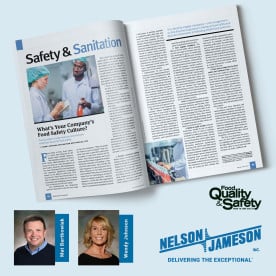Monthly Archives: November 2011
- November 17, 2011
The Food Modernization Act (FSMA) has been a continued and focused project for the FDA throughout 2011. The FDA is actively working on shaping and implementing the
- November 14, 2011
Originally from the Japanese car industry, the 5S method is now commonplace in production facilities globally. It provides a streamlined work environment that can lower costs, increase efficiency, and produce better product and a more motivated staff. 5S lays the groundwork for a visual workplace – for improving quality, organization, efficiency, housekeeping AND safety in your organization.
5S consists of these components:
Sort – go thru each area and eliminate all tools and supplies not used in that process.
Set in Order - arrange the work area for maximum efficiency, everything in its place.
Shine - a systematic approach to cleaning and scheduled maintenance of all equipment.
Standardizing - everything looks the same and is simplified.
Sustaining – keeping up what has been accomplished.
- November 10, 2011
One of the most interesting stories from the lab department occurred about 12 months ago and continues to unfold. We received a call from the father of Chad Campbell, a very
- November 02, 2011
Salt (sodium chloride) has its own familiar taste and is classified as one of the five basic tastes (sweet, salt, sour, bitter and umami). Salt enhances flavors, particularly in savory foods such as chocolate and suppresses bitterness. Reduction or removal may make foods bland and unappetizing. Salt also plays a major role in food safety.
Although great strides have been made by the Food Processing Industry to reduce salt, futher reductions are sure to follow to meet targets of healthy salt consumption levels. A gradual reduction of salt (stealth approach) is applauded by organizations such as the UK Food Standards Agency and World Action on Salt and Health. The rate is uncertain and may vary significantly, however many companies have successfully used a stepwise reduction rate of 5% without compromising food safety and consumer perception.





